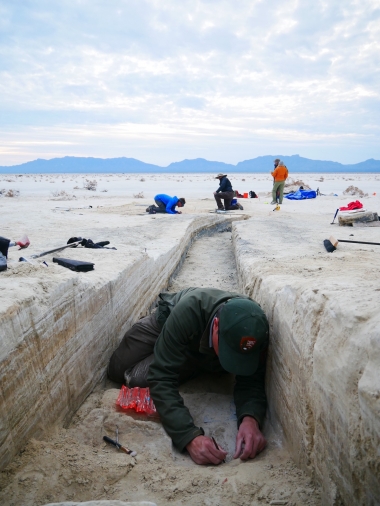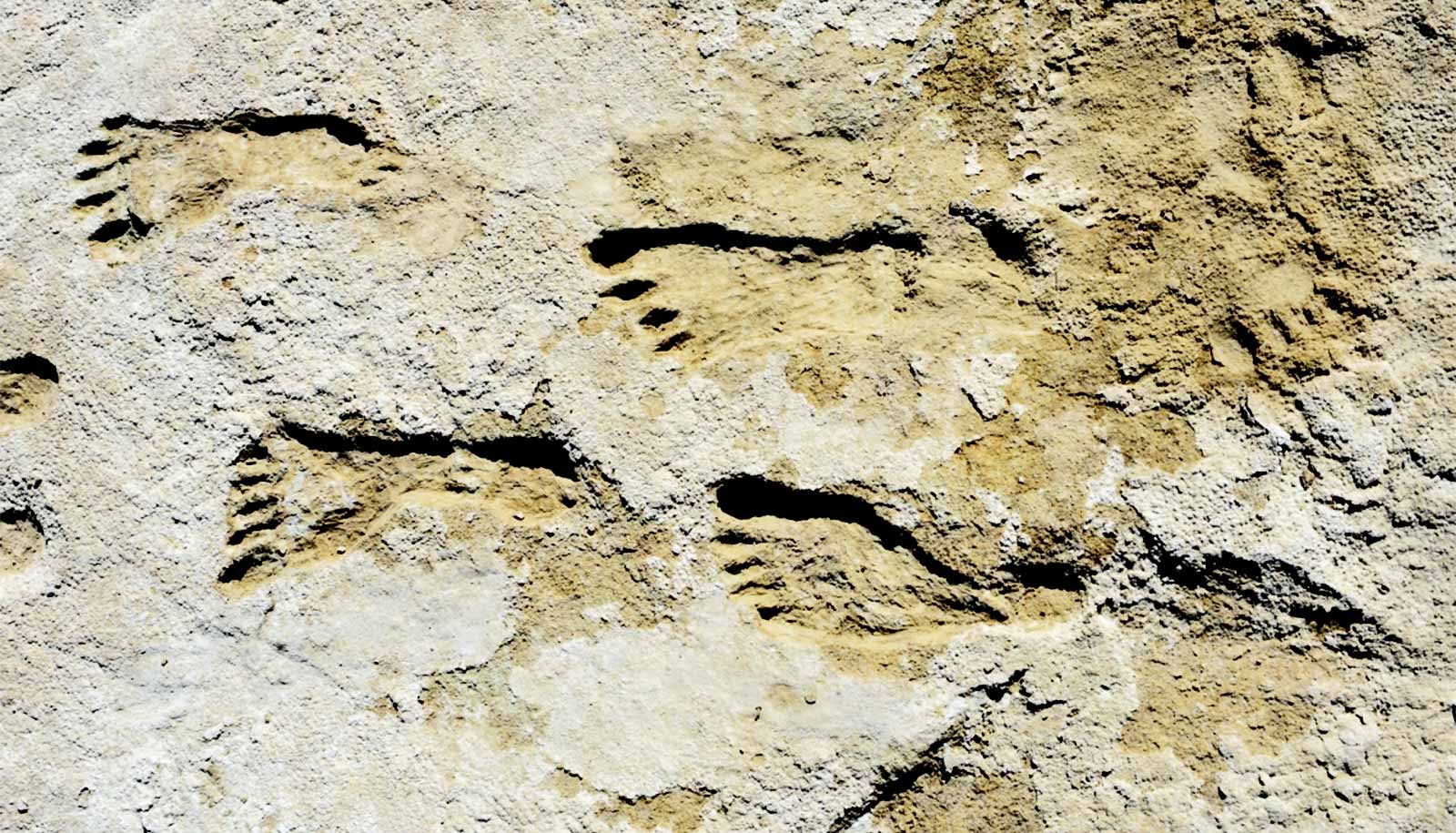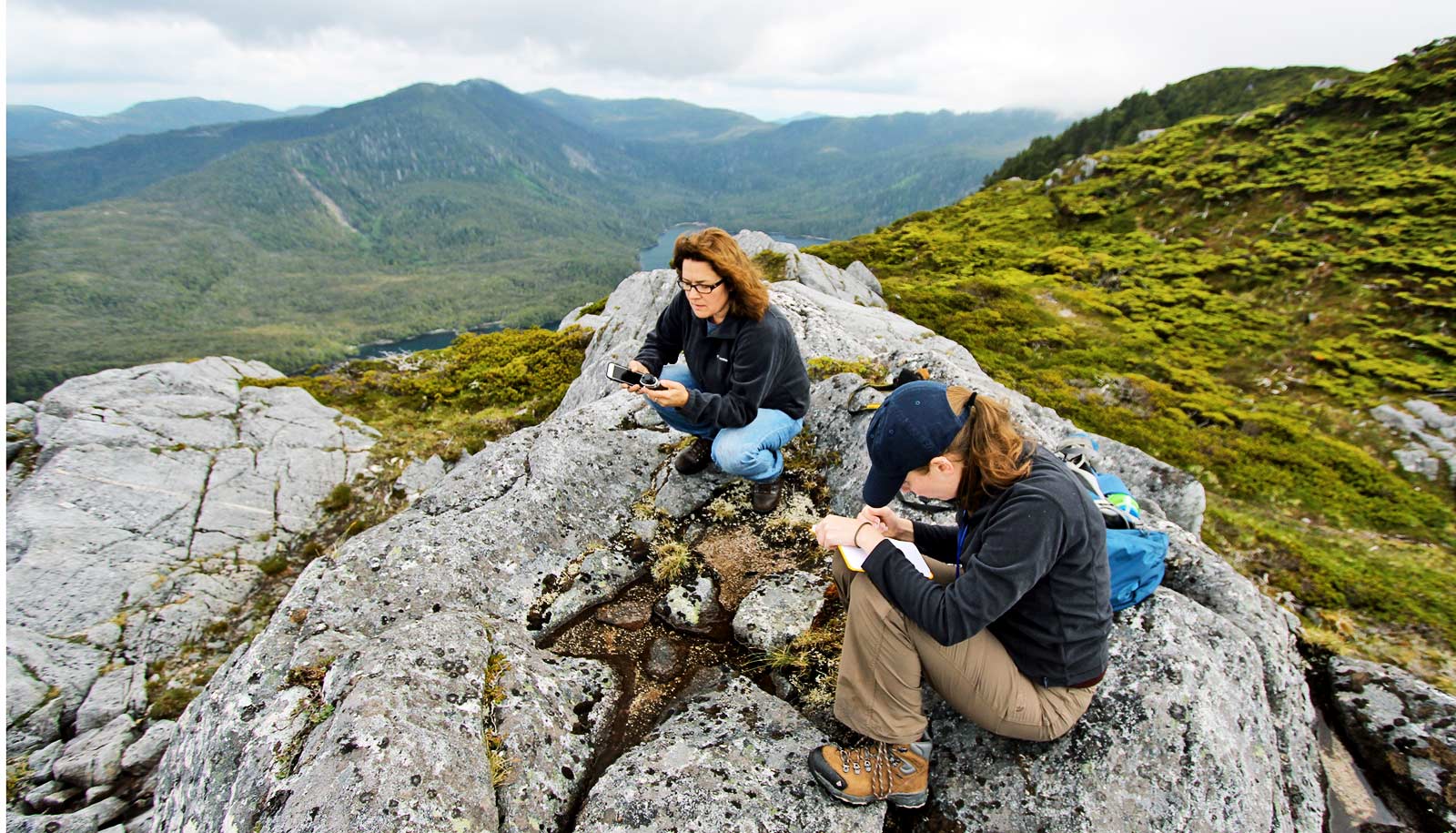Footprints found at White Sands National Park in New Mexico provide the earliest unequivocal evidence of human activity in the Americas and shed light on life over 23,000 years ago.
“For decades, archaeologists have debated when people first arrived in the Americas,” says study coauthor Vance Holliday, a professor in the University of Arizona School of Anthropology and department of geosciences.
“Few archaeologists see reliable evidence for sites older than about 16,000 years. Some think the arrival was later, no more than 13,000 years ago by makers of artifacts called Clovis points.
“The White Sands tracks provide a much earlier date. There are multiple layers of well-dated human tracks in streambeds where water flowed into an ancient lake. This was 10,000 years before Clovis people.”
Researchers Jeff Pigati and Kathleen Springer, with the US Geological Survey, used radiocarbon dating of seed layers above and below the footprints to determine their age. The dates range in age and confirm human presence over at least two millennia, with the oldest tracks dating back 23,000 years.

This corresponds to the height of the last glacial cycle, during something known as the Last Glacial Maximum, and makes them the oldest known human footprints in the Americas.
Footprints suggest ancient children at play
It was previously thought that humans entered America much later, after the melting of the North American ice sheets, which opened up migration routes.
“Our dates on the seeds are tightly clustered and maintain stratigraphic order above and below multiple footprint horizons—this was a remarkable outcome,” Springer says.
The footprints tell an interesting tale of what life was like at this time. Judging by their size, the tracks were left mainly by teenagers and younger children, with the occasional adult.
“The footprints left at White Sands give a picture of what was taking place, teenagers interacting with younger children and adults,” says lead author Matthew Bennett from Bournemouth University in England. “We can think of our ancestors as quite functional, hunting, and surviving, but what we see here is also activity of play, and of different ages coming together. A true insight into these early people.”
Holliday and study coauthor Brendan Fenerty, a University of Arizona doctoral student in the department of geosciences, documented basic geologic layering and dating in trenches on the White Sands Missile Range near the discovery site several years before the tracks were found.
“We were interested in reconstructing the evolution of the landscape in the context of environmental changes and some younger archaeological sites in the area,” Holliday says. “We had no idea what was buried nearby.”
Mammoths and sloths and wolves (oh, my)
Tracks of mammoth, giant ground sloth, dire wolves, and birds are also all present at the White Sands site.
“It is an important site because all of the trackways we’ve found there show an interaction of humans in the landscape alongside extinct animals, like mammoths and giant sloths,” says coauthor Sally Reynolds of Bournemouth University. “We can see the co-existence between humans and animals on the site as a whole, and by being able to accurately date these footprints, we’re building a greater picture of the landscape.”
The human tracks at White Sands were first discovered by David Bustos, resources manager at the park.
“It is incredible to have the confirmation on the age of the human prints, and exciting but also sad to know that this is only a small portion of the 80,000 acres where the prints have been revealed bare and are also being rapidly lost to ongoing soil erosion,” Bustos says.
The team also pioneered non-invasive geophysical techniques to help locate the site. Tommy Urban, from Cornell University, led this part of the work.
“Detection and imaging with nondestructive technology has greatly expanded our capacity to study these remarkable footprints in their broader context,” he says.
Traditional archaeology relies on the discovery of bones and tools but can often be difficult to interpret. Human footprints provide unequivocal evidence of presence and also of behavior.
“White Sands provides the first unequivocal evidence for human presence in the Americas during the Last Glacial Maximum,” says coauthor Dan Odess of the National Park Service.
“Not all archaeological sites contain such unequivocal evidence. One reason why this discovery is important is that it makes the idea that other purportedly ancient sites really are evidence for human presence that much more plausible, even if the evidence they contain is less unequivocal. This doesn’t mean all of those sites are legitimate, but it means they cannot be dismissed out of hand.”
The study appears in the journal Science.
Source: University of Arizona



